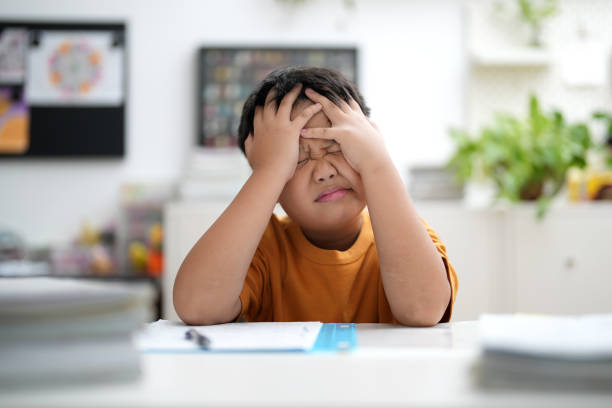Dyslexia is a common learning disability that affects millions of people worldwide.
I’ve had dyslexia my whole life, so this topic is close to my heart. Dyslexia has affected how I learn and work, but it’s also helped me think differently.
In this article, we’ll look at what dyslexia is, what causes it, it’s symptoms, diagnosis, and available support.
Understanding Dyslexia as a Specific Learning Disability
Dyslexia is a learning disability that falls under the umbrella of specific learning disabilities. According to the International Dyslexia Association, dyslexia is a specific learning disorder that is neurobiological in origin.
Specific learning disabilities are disorders that affect an individual’s ability to acquire and use specific skills, such as reading, writing, or math, despite having average or above-average intelligence. It is important to note that dyslexia is not related to intelligence or ADHD, although some individuals may have co-occurring conditions.

What is Dyslexia?
Dyslexia is a neurological disorder that impacts an individual’s ability to read, write, and spell. It is important to note that dyslexia is not related to intelligence; people with dyslexia often have average or above-average intelligence.
Instead, dyslexia affects how the brain processes language, making it difficult for individuals to connect letters to sounds and decode words accurately. A child with symptoms of dyslexia include signs of struggle with learning how to read and development of adequate reading skills. People with dyslexia have trouble with reading, spelling, and writing, which can affect a person’s self-image and academic performance.
Types of Dyslexia
There are several types of dyslexia, including:
1. Phonological dyslexia: Difficulty with phonological processing and decoding words 2. Rapid naming dyslexia: Difficulty quickly naming letters, numbers, or colors 3. Double deficit dyslexia: A combination of phonological and rapid naming difficulties 4. Visual dyslexia: Difficulty with visual processing and recognizing words
It is important to note that dyslexia isn’t a visual problem; individuals with dyslexia do not see letters or words backwards.
Causes of Dyslexia
Research suggests that dyslexia has a strong genetic component, meaning it can run in families. The exact cause of dyslexia is not known, but studies have shown that it is related to differences in the way the brain processes language.
Additionally, studies have shown that people with dyslexia have differences in the way their brains process language compared to those without the condition. Environmental factors, such as exposure to toxins or premature birth, may also play a role in the development of dyslexia.
Symptoms of Dyslexia

The signs and symptoms of dyslexia can vary from person to person, but some common dyslexia symptoms include:
1. Difficulty with reading and spelling 2. Struggles with phonological awareness (the ability to identify and manipulate sounds in words) 3. Poor reading comprehension 4. Slow reading speed 5. Difficulty with written expression 6. Challenges with memorizing sequences, such as the alphabet or multiplication tables
It is important to note that not all individuals with dyslexia will exhibit all of the listed symptoms, and the severity of symptoms can vary from person to person. According to the Mayo Clinic, dyslexia symptoms may be difficult to recognize before a child enters school, but some early signs and symptoms may appear in preschool.
These symptoms can lead to various reading problems that affect an individual’s academic performance and self-esteem. Dyslexia appears in childhood, but symptoms may persist into adulthood. Adults with dyslexia may continue to struggle with reading, writing, and spelling throughout their lives.

Diagnosis and Treatment
Early identification and intervention are crucial for individuals with dyslexia. A child with dyslexia may be diagnosed through a comprehensive assessment process that includes cognitive, academic, and language testing.
A comprehensive diagnostic process, which may include cognitive and academic assessments, can help determine if a person has dyslexia. This process often involves:
1. A review of medical, educational, and family history 2. Tests of intellectual functioning 3. Academic achievement tests, particularly in reading and writing 4. Phonological processing assessments 5. Vision and hearing screenings to rule out other potential causes
It’s important to note that dyslexia can be diagnosed at any age, though early diagnosis is preferable for timely intervention.
Once diagnosed, there are many effective intervention strategies and accommodations that can support individuals with dyslexia, such as:
- Multi-sensory reading instruction: This approach engages multiple senses (visual, auditory, tactile) to help individuals learn reading and spelling skills.
- Structured literacy programs: These systematic programs focus on phonology, sound-symbol association, syllable instruction, morphology, syntax, and semantics.
- Extra time on tests and assignments: This accommodation allows individuals with dyslexia to demonstrate their knowledge without the added pressure of time constraints.
- Use of assistive technology: text-to-speech apps, audiobooks, and speech-to-text software can help individuals with dyslexia access and produce written content more easily.
- One-on-one tutoring or small group instruction: Personalized attention can help address specific areas of difficulty.
There is no one-size-fits-all approach to treat dyslexia, but with the right support and interventions, individuals with dyslexia can learn to read and write effectively. The goal of treatment is not to “cure” dyslexia, but to help individuals develop strategies to work around their difficulties and build on their strengths.

Living with Dyslexia
Dyslexia is a lifelong condition, but with the right strategies and accommodations, individuals with dyslexia can thrive. A child with dyslexia may struggle in school, but with the right support and interventions, they can succeed academically and in their personal lives.
It is essential for parents, teachers, and individuals with dyslexia to work together to create a supportive learning environment that fosters success. This collaborative approach may include:
1. Using multi-sensory teaching methods: Incorporating visual, auditory, and kinesthetic-tactile elements in lessons can help reinforce learning. 2. Providing extra time for assignments and tests: This allows individuals with dyslexia to demonstrate their knowledge without the added stress of time pressure. 3. Utilizing assistive technology: Tools like text-to-speech software, spell-checkers, and graphic organizers can significantly aid in reading and writing tasks. 4. Developing organizational skills: Teaching strategies for note-taking, time management, and study skills can help individuals with dyslexia manage their academic workload more effectively. 5. Focusing on strengths: Encouraging pursuits in areas where the individual excels can boost confidence and motivation. 6. Promoting self-advocacy: Teaching individuals with dyslexia to understand their rights and communicate their needs effectively is crucial for long-term success.
In the workplace, adults with dyslexia may benefit from similar accommodations. Many successful professionals with dyslexia have found that their unique way of thinking contributes to creative problem-solving and innovative ideas in their fields.
It’s also important to address the emotional aspects of living with dyslexia. Many individuals with dyslexia experience frustration, anxiety, or low self-esteem due to their struggles with reading and writing. Providing emotional support, celebrating successes, and fostering a growth mindset can help build resilience and a positive self-image.
Support groups and organizations dedicated to dyslexia awareness and support can be valuable resources for individuals with dyslexia and their families. These groups often provide up-to-date information, advocate for policy changes, and offer a sense of community for those affected by dyslexia.
Remember, dyslexia is just one aspect of a person’s profile. Many individuals with dyslexia have gone on to achieve great success in various fields, from science and technology to arts and entrepreneurship. With the right support, understanding, and perseverance, individuals with dyslexia can overcome challenges and reach their full potential.
The Road Ahead
Dyslexia is a complex learning disability that affects reading, writing, and spelling. By understanding the causes and symptoms of dyslexia, we can better support those who struggle with this condition. With the right interventions and accommodations, individuals with dyslexia can thrive academically and in their personal lives.
If you suspect that your child may have signs of dyslexia, don’t hesitate to seek help from a qualified professional who can provide a proper diagnosis and develop an appropriate treatment plan.
As someone who’s lived with dyslexia for years, I’d say to parents, teachers, and others with dyslexia: try to see it as a different way of thinking rather than a problem. People with dyslexia often have strengths in creativity and problem-solving. With some support and the right approach, the challenges that come with dyslexia can be managed, and you can find your own path to success.








